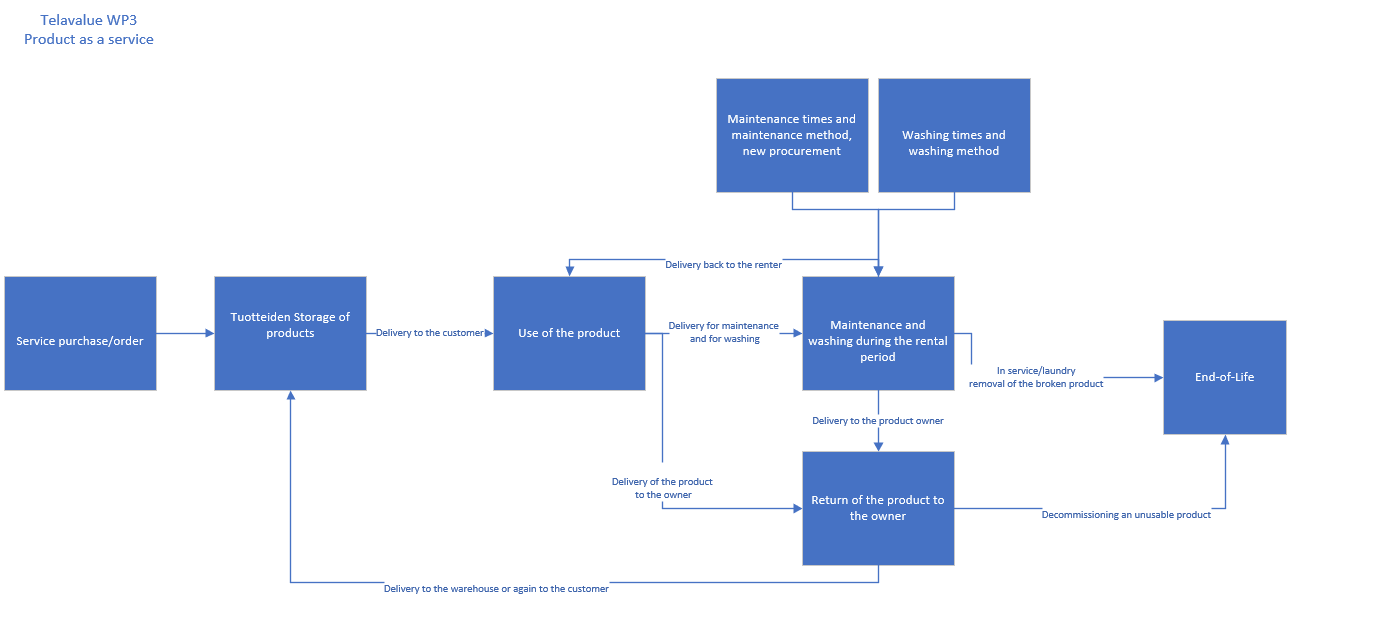Environmental impacts of circular textile models – some important factors

Environmentally, circular textile economy makes sense only if the solutions reduce more emissions than generate new ones. When the materials flow between different users, the product life cycles get more complex and demand extra attention to environmental impacts – throughout the value chain. It is rather hard to compare the complete sustainability impacts of different business models, because such studies need a lot of assumptions about uncertain factors like consumer behavior.
In work the Telavalue project, we examined the environmental factors of two circular business models: re-use and product as a service. To study these models, detailed example cases were created of each model. They were a take-back system for consumers, and a textile service for enterprises. To form realistic life cycles, both models were tweaked together with companies and researchers. As a result of brainstorming, workshops and interviews, the following product life cycles were chosen for an environmental analysis.


Soon after starting we noticed that both models consist of similar main processes: washing, repairs, storage, maintaining the sales platform, transportations, and end of life treatment for unusable items. These processes are an essential part of many other circular business models as well, for example sharing platforms. Differences occur only in the implementation of these processes, and changes in the ownership.
The studied product life cycles are hypothetical, so there was no real-life data available on them. Instead of life cycle assessment, we decided to map out the factors that contribute to the environmental performance of these processes. The listing helps recognizing things that need optimization when implementing these circular models. The results also serve as a basis for future life cycle inventories.
Out of the examined product life cycles, a total of 29 environmentally relevant factors were found. Some of them may also multiply, depending on the total amount of use periods during life cycle. The factor sheets can be downloaded from attachment below.
Most of the factors (17) are quantitative, and the tables suggest suitable measurement units for them. The rest of the factors (12) are qualitative, related to the choice of energy form, among others. Every factor must be dealt with if willing to speak about “sustainability” and “circular economy” in the same sentence. The list of the factors can be found here.
More information:
Erika Raitala
erika.raitala@turkuamk.fi
